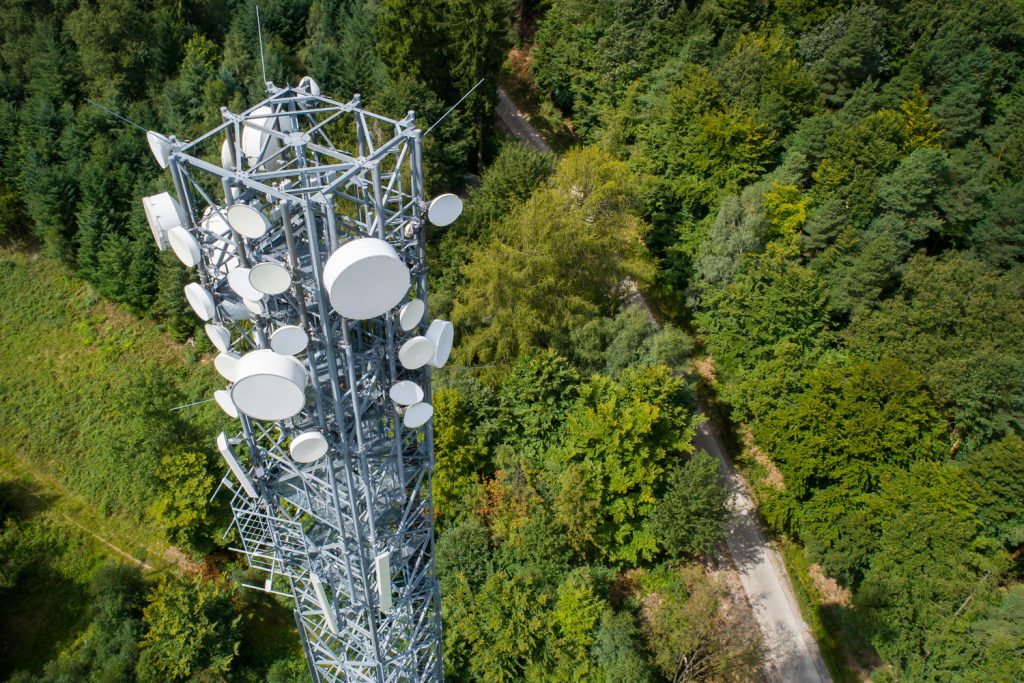By: CostQuest’s Consulting Services Team
How to calculate the cost to operate & maintain a broadband network over time
With the seemingly insatiable demand for more bandwidth, communications companies must upgrade older networks (or build new) with current technologies to meet that demand. These upgrades require significant expenditures for materials and labor. Calculating the cost to deploy, operate and maintain a broadband network is a complicated process, and even more difficult to understand at the customer level. This complexity arrives from the many components needed to calculate the network cost: demand, equipment capacities and prices, labor costs, geography, and demographics.
Step 1: price x quantity = investment

The first step in understanding the cost to deploy, operate and maintain a broadband network is to calculate investment which is the sum of labor and equipment needed for the network.
To calculate investment, we need to know the quantities of equipment, amount of labor (installation, planning, engineering, etc.), the price of equipment, cost of labor, and other costs incurred in the deployment. When modeling investment, we capture those attributes that impact network cost, including geography, demographics, and roads to determine quantities of materials via efficient equipment locations relative to service locations and the amount of construction labor.
The quantities are then multiplied times unit prices for material and labor to determine total investment. To interpret economic viability, the investments are then converted to an ongoing cost to account for expenses and capitalization. Revenue may then be compared to the costs to determine returns and any potential subsidy needed.
Step 2: Select efficient equipment placements
Algorithms used within CostQuest’s models identify optimal design clusters of service locations and place equipment in efficient locations to maximize end-users served and to minimize pieces of equipment placed. In the case of fiber networks, drop terminals and splitters must be efficiently placed to maximize coverage. Once the locations of equipment are identified minimum spanning road tree (MSRT) methodologies can be used to efficiently route cables along roads to connect customer locations to drop terminals, drop terminals to splitters, and connect splitters to carrier central offices or hubs. In the case of wireless networks, tower locations must be efficiently selected to maximize coverage. For any network, equipment must be sized to accommodate demand.
Step 3: Size equipment based on capacity demand
Cables and other communications equipment are not sized to serve one customer, but built-in discrete sizes to serve many customers making investments in communications networks “lumpy”. Knowing demand along the routes served helps efficiently size equipment to serve customer locations.
Likewise, knowing the total demand within a given service area helps determine the quantities of optical equipment in carrier serving offices. After accounting for demand and projected utilization, the equipment can be sized efficiently to avoid under-sizing and deploying excess capacity.
Step 4: Consider terrain & geography factors

Knowledge of terrain and geography in a service area helps determine when to apply cost for aerial, and underground cables and to also know when rock, water, or steep slopes may be encountered contributing to higher costs. Demand locations and the roads that are run by the locations can be compared to terrain maps that identify areas requiring an additional cost.

In the case of wireline networks, once all of the sizes and distances of cable are determined along with sizes and quantities of equipment (materials), the units needed are multiplied times unit prices for material and labor to calculate total investment. In the case of wireless networks, total units of towers, radio equipment, power, and testing are multiplied times unit prices for material and labor to determine total investment.
Step 5: Develop cost to maintain the network
Regardless of a carrier using wireline or wireless technologies, success is based on a return on investment. Whether the carrier measures success against total cost, EBITDA, or other financial metrics, understanding all sources of cost is important to determine returns. In addition to the material and labor to build the network, the carrier incurs costs for customer support, maintenance, replacement plant, debt cost and equity return for the capital consumed by the deployment, and paying income taxes on income earned.
As the network ages:
- Structures, cables, and equipment must be maintained to ensure high quality of service for end-users
- Sections of the network and equipment must be replaced as it fails or reaches the end of its useful economic life
These additional costs of replacement capital along with maintenance known as expenses are part of doing business and are significant sources of cost. Furthermore, property taxes must also be paid to the jurisdictions where the network is located. Customer support and corporate common costs are other costs of doing business that should be accounted for in developing a cost of service. If you are in the planning stage, expenses can be estimated as a percentage of investment where this percentage is based on the relationship of historical expenses compared to capital.
Step 6: Calculate return on investment
Calculating the return on investment requires not only the above knowledge of cost but also requires knowledge of revenue. Total revenue is simply units in service times the unit prices for service, but determining units in service can be challenging. Revenue can be measured against the projected demand for the services offered. Competition and demographics play a role in determining revenue. In the case of a new network, customers subscribing to service grow over time, meaning revenue follows subscription. Knowing how subscription rates vary with demographics, with competition, and over time helps to better predict potential revenue and market share.
Once revenue is known or estimated, earnings before interest, taxes, depreciation, and amortization (EBITDA) can be calculated as revenue-less expenses and provide a gauge of return against variable or short-term costs. While it is a useful metric, EBITDA does not account for the total or long-term cost of providing service that also includes income taxes, depreciation, and financial costs. As the carrier earns revenue, it pays income taxes on its earnings. Income taxes and other taxes are part of the costs of doing business.
Step 7: Identify if network cost outweighs revenue
Building a network capable of serving many customers takes time and money. Often the needed money is borrowed from investors or financial institutions and paid back over time as the carrier earns revenue from the services it provides. Over time, the carriers pay back this borrowed money through a combination of servicing its debts with lenders and paying dividends to investors. When calculating a long-run cost, the equipment is depreciated over its asset life and a cost of money (aka the weighted average cost of capital or WACC) is used as the discount rate to account for the burden of paying interest and dividends. Capital-related expenses are calculated as a percentage of investment where the percentage accounts for depreciation, WACC, and income taxes.
Step 8: Leverage federal subsidy programs to help cover network cost
In many areas, the cost of providing service is less than the revenue thus bringing a profit. However, in many rural areas, the cost of providing service far exceeds the revenue. When this is the case, other subsidies are required for the carrier to be made whole financially. Federal funding subsidies in telecommunications for broadband deployment have been around for many years and were built to ensure voice services are provided at just reasonable and affordable rates. In more recent years, the voice subsidies have been converted to support broadband services under the same premise: the cost of providing service is sometimes much higher than the revenue generated for that service.